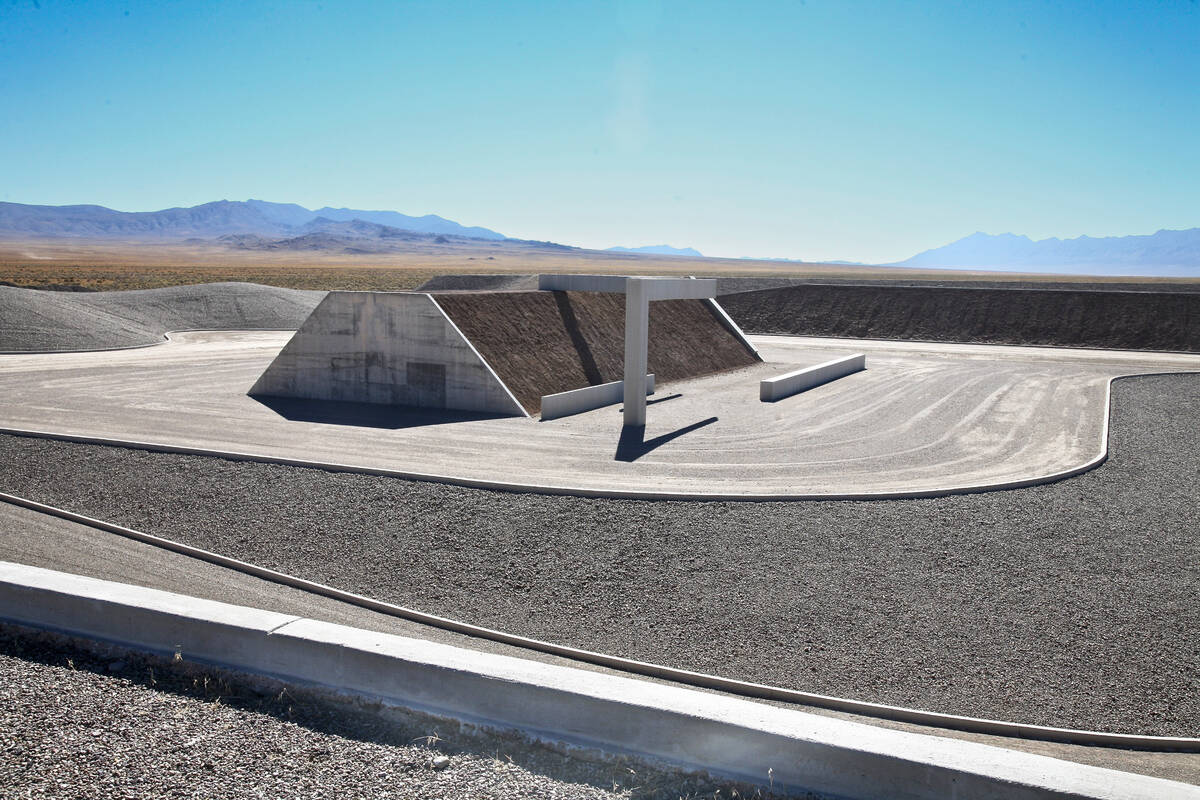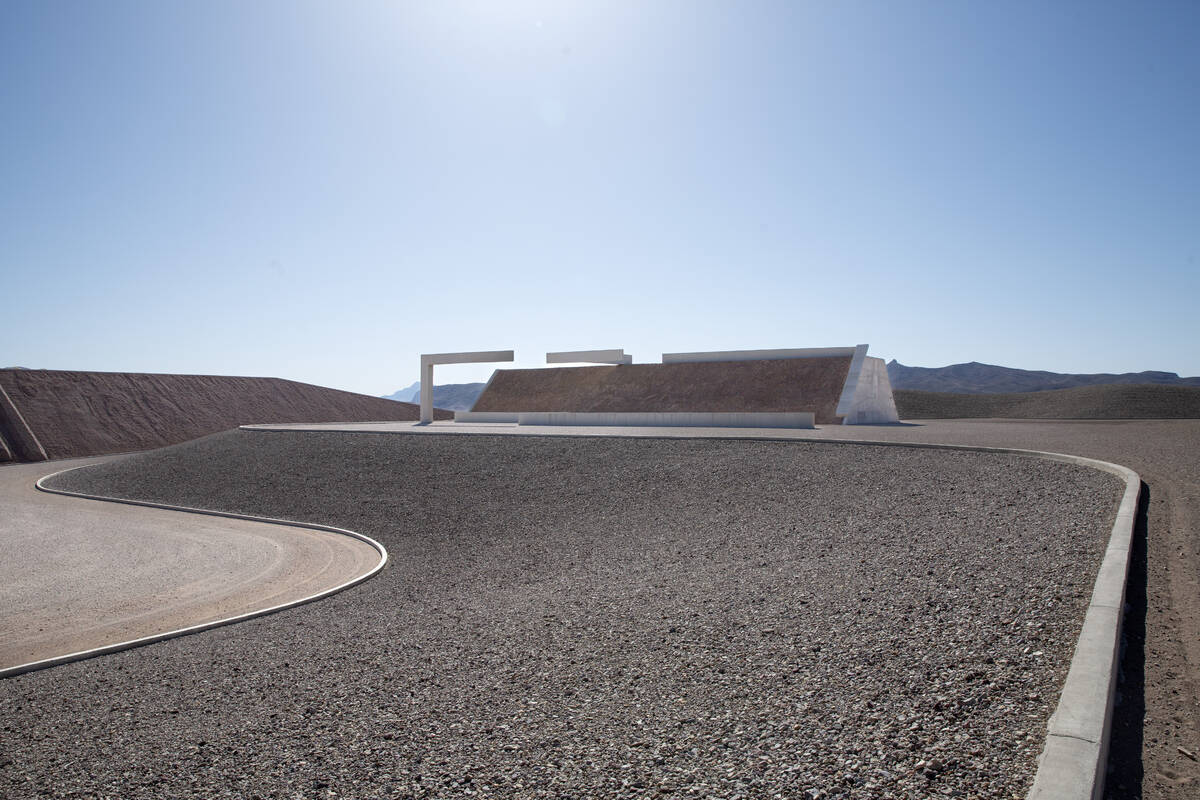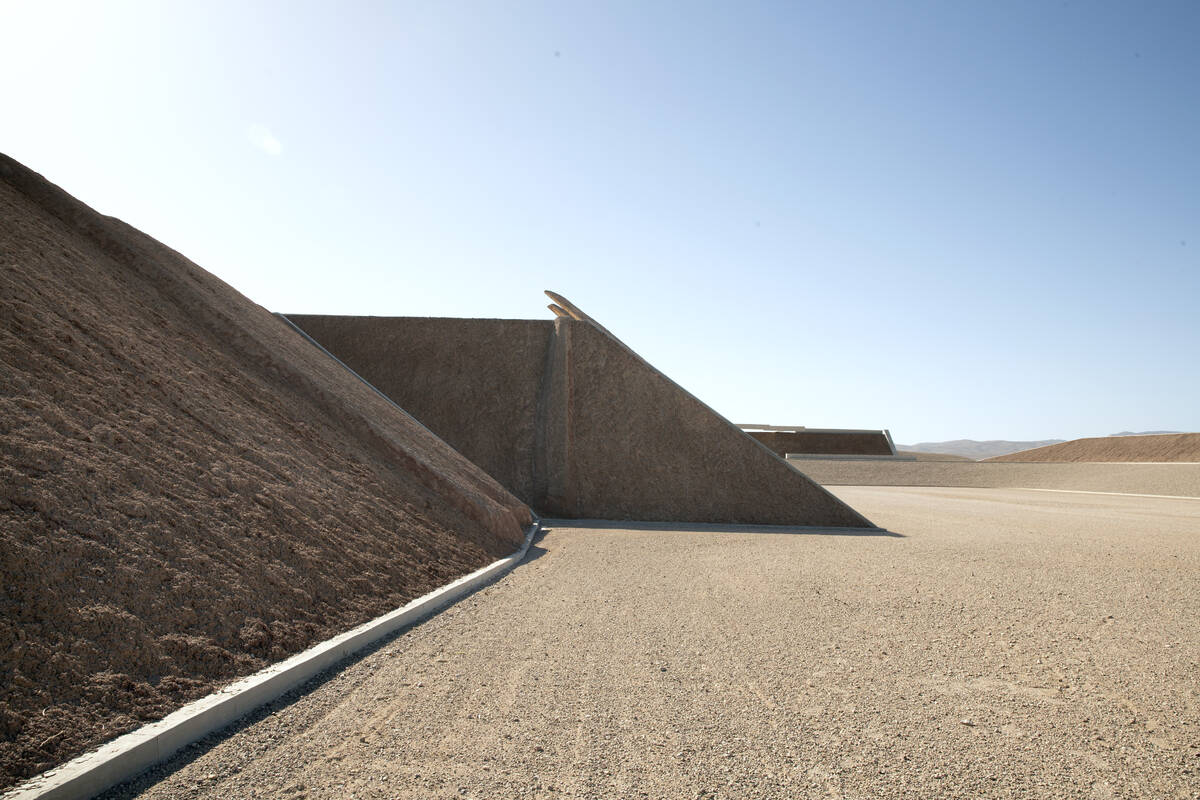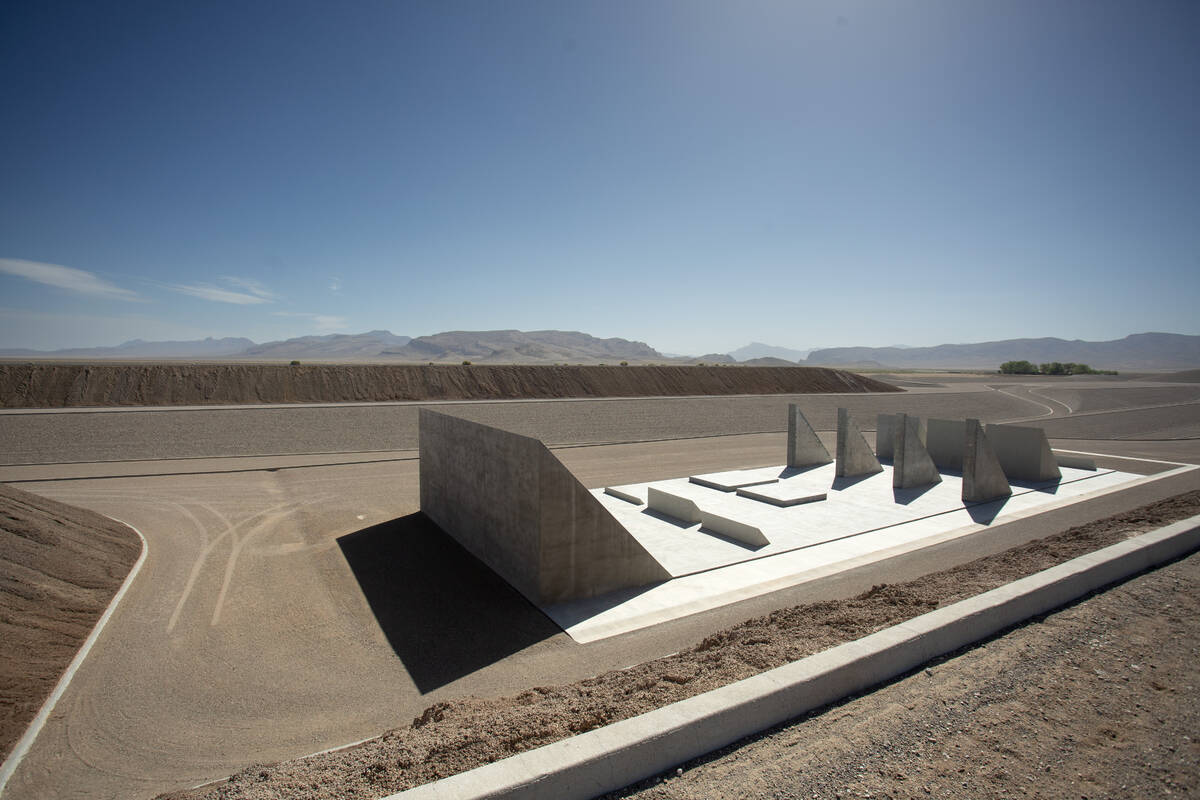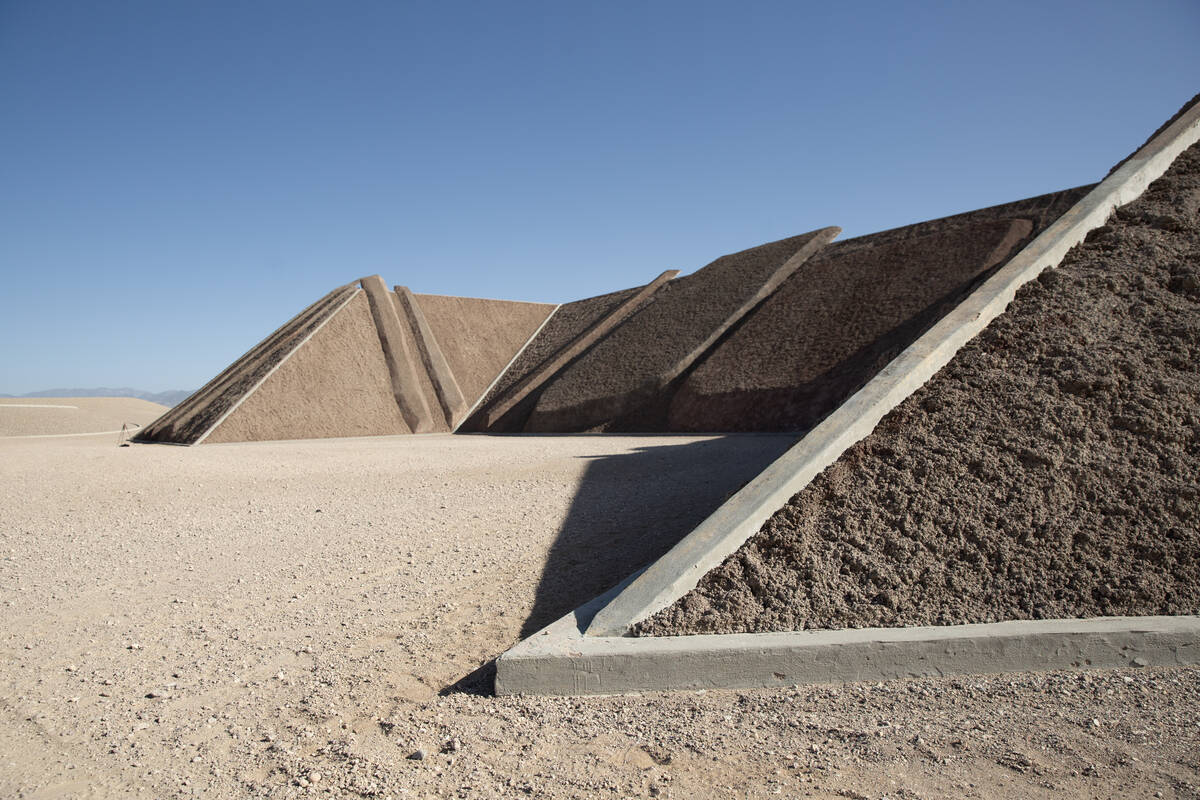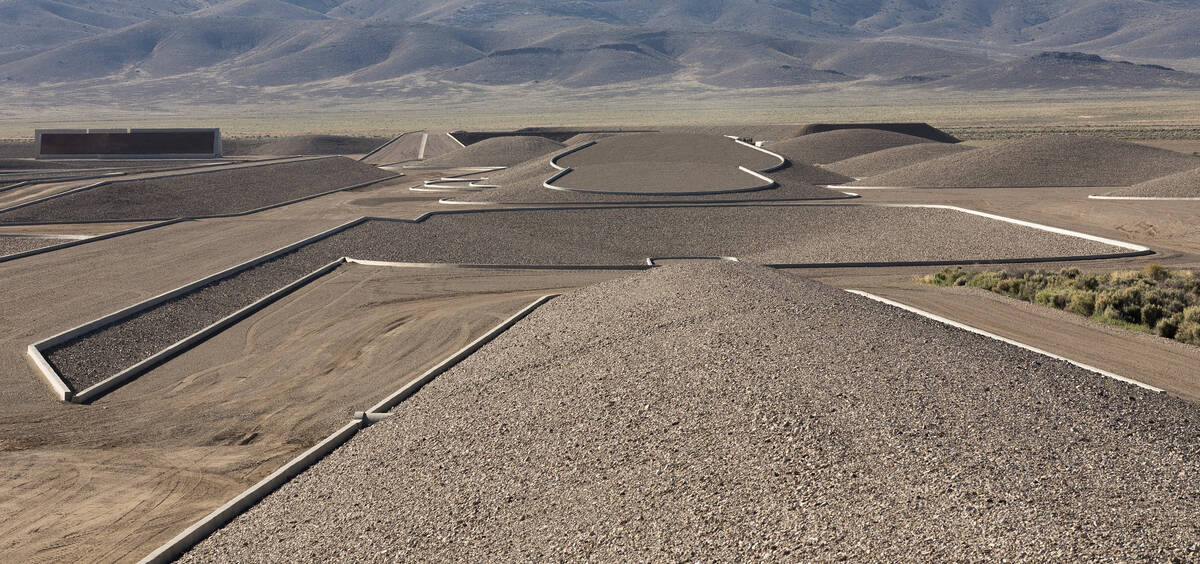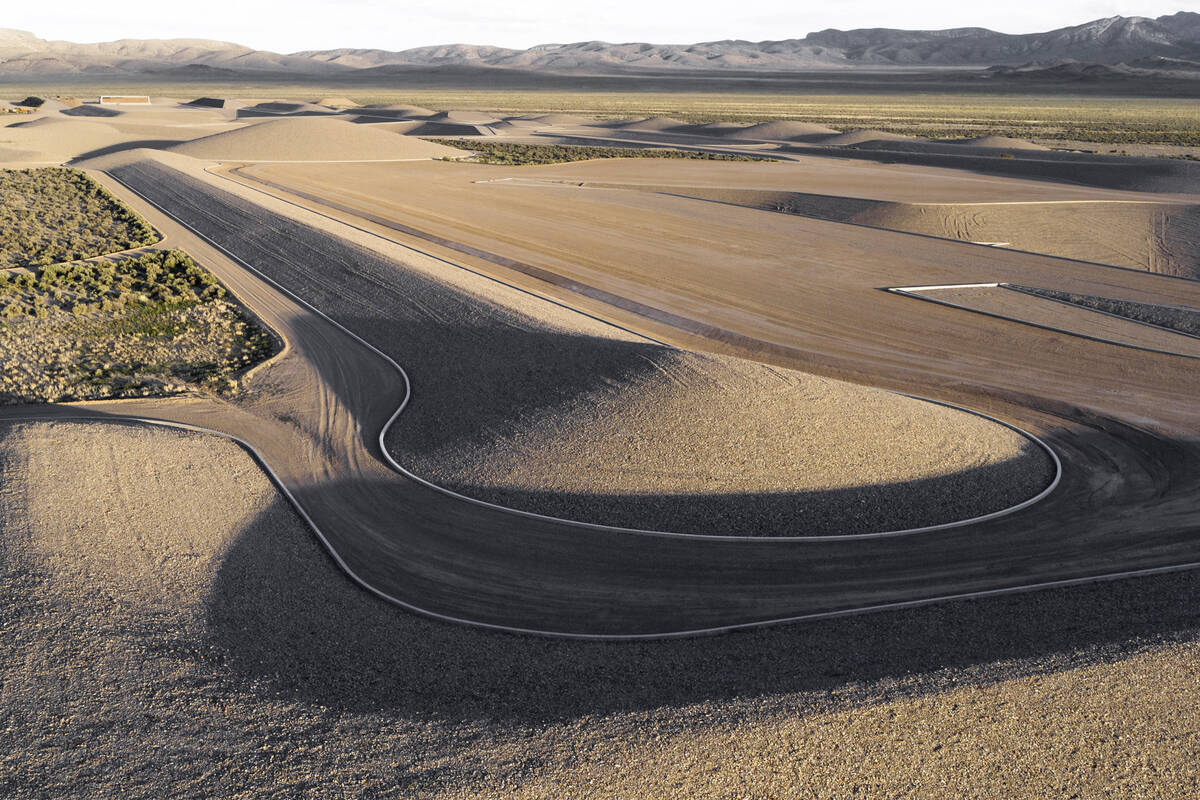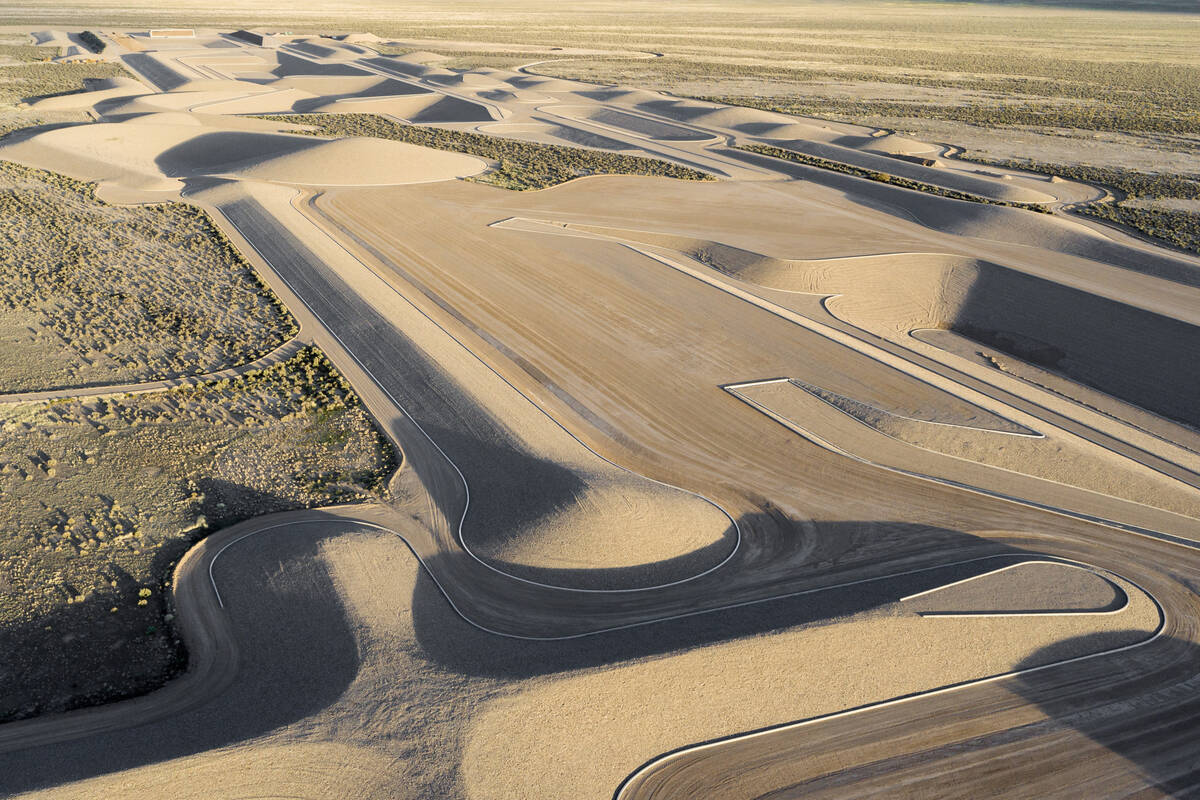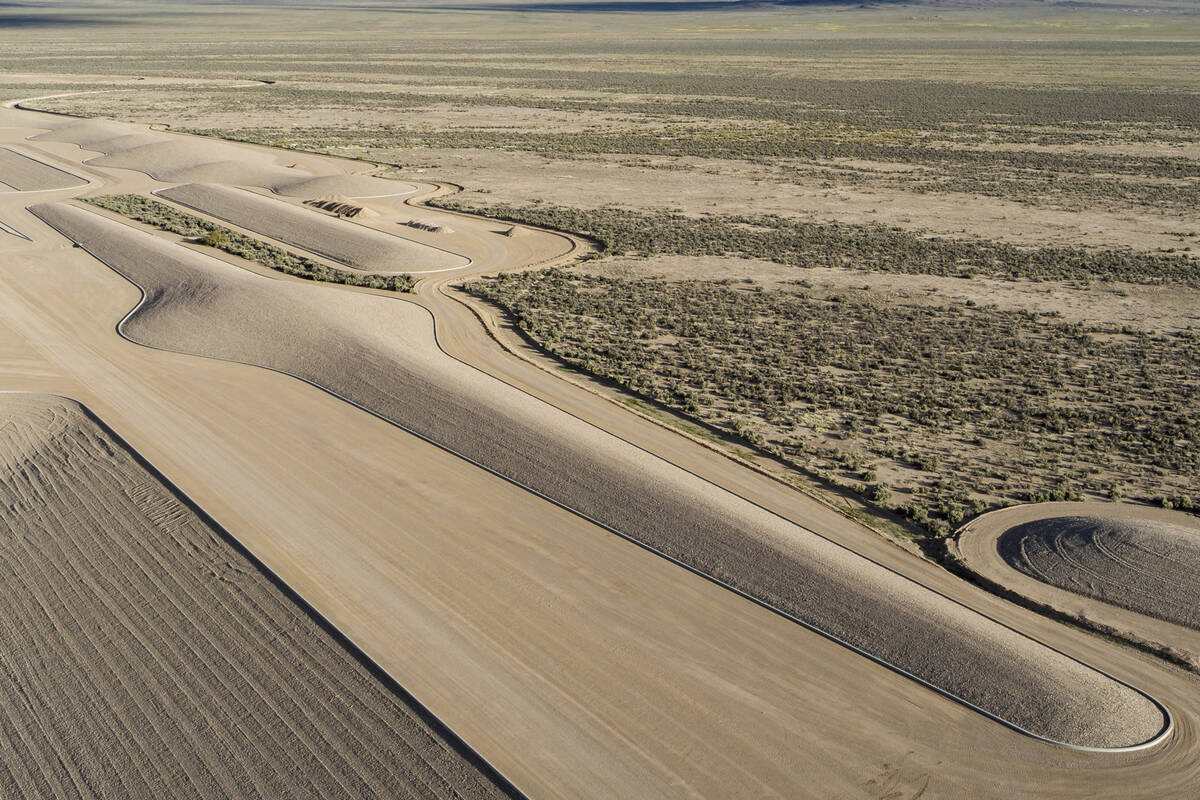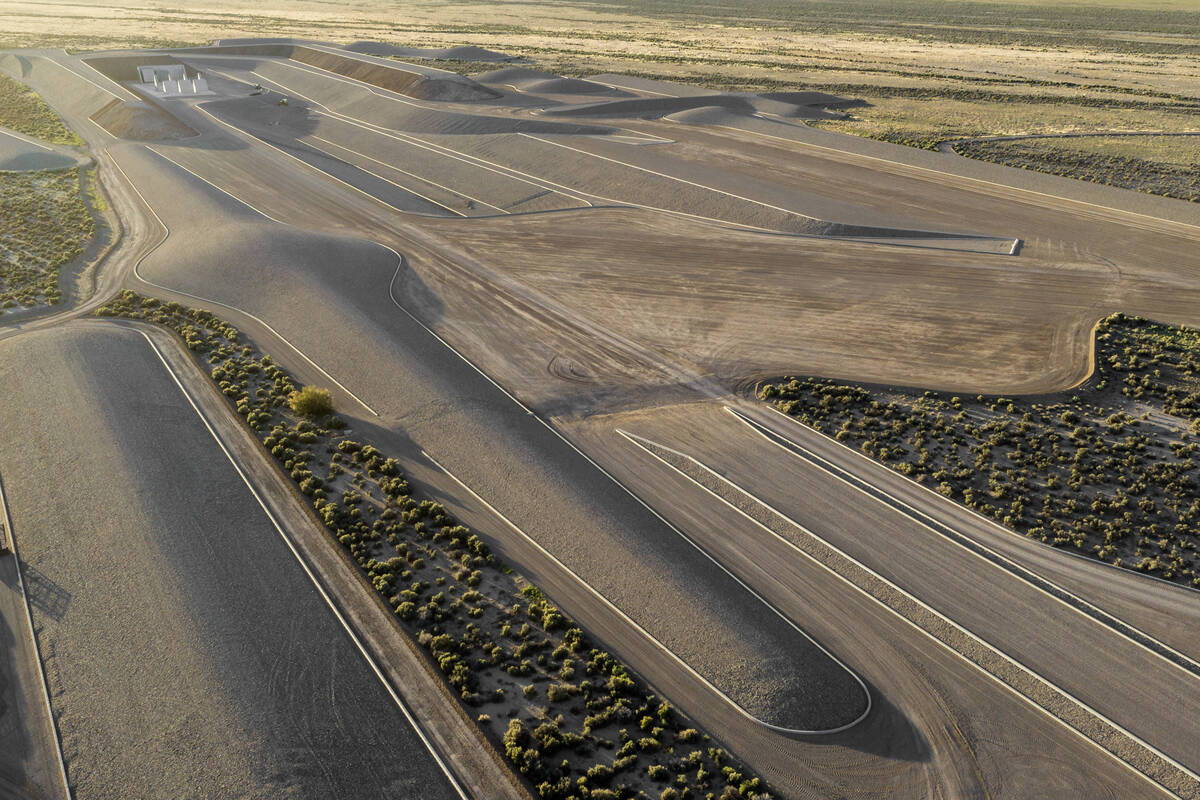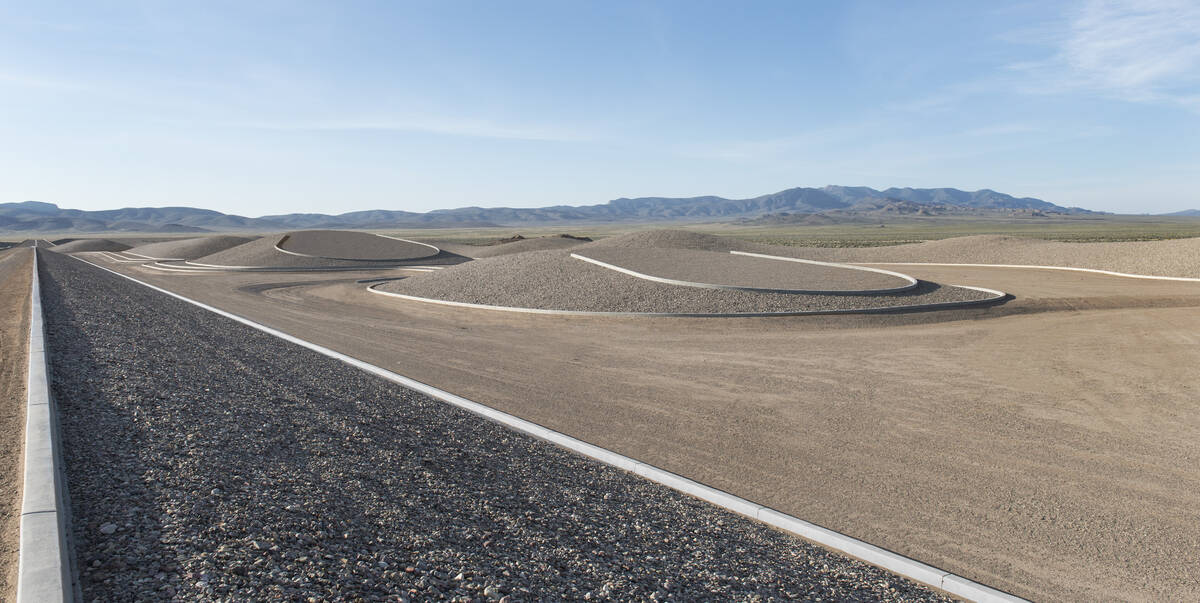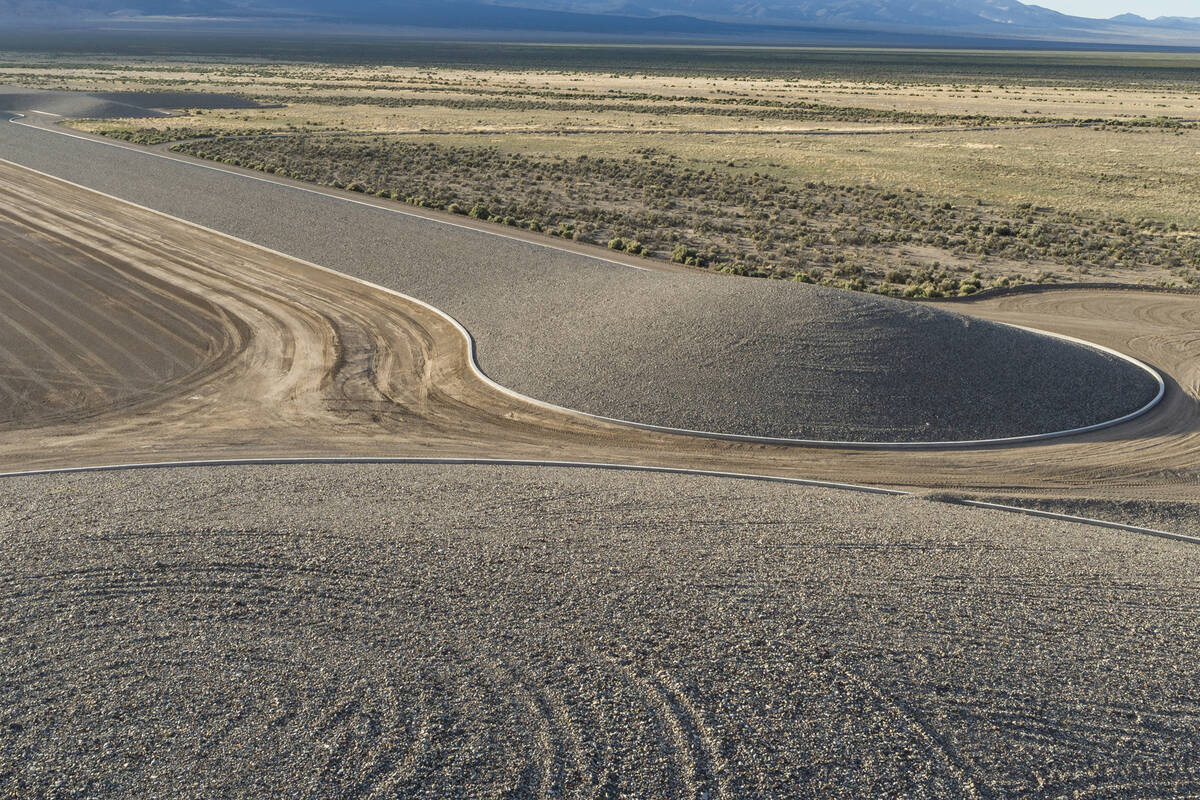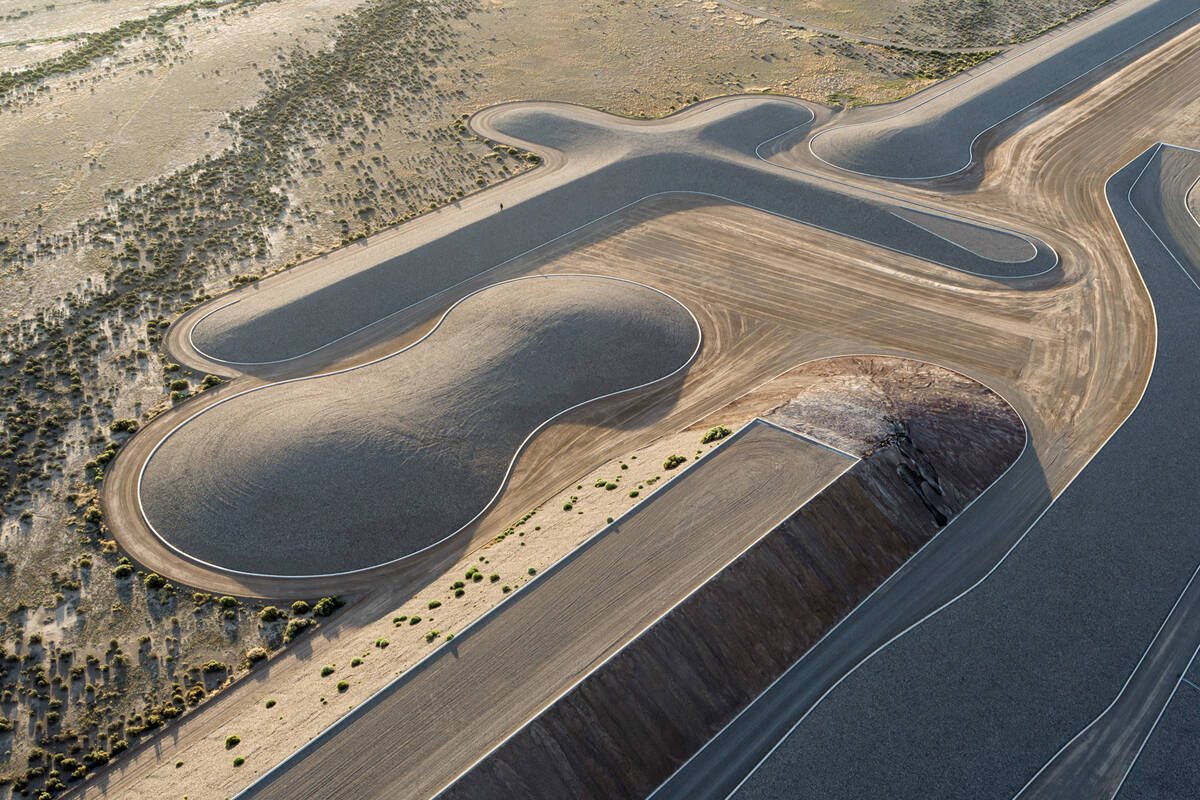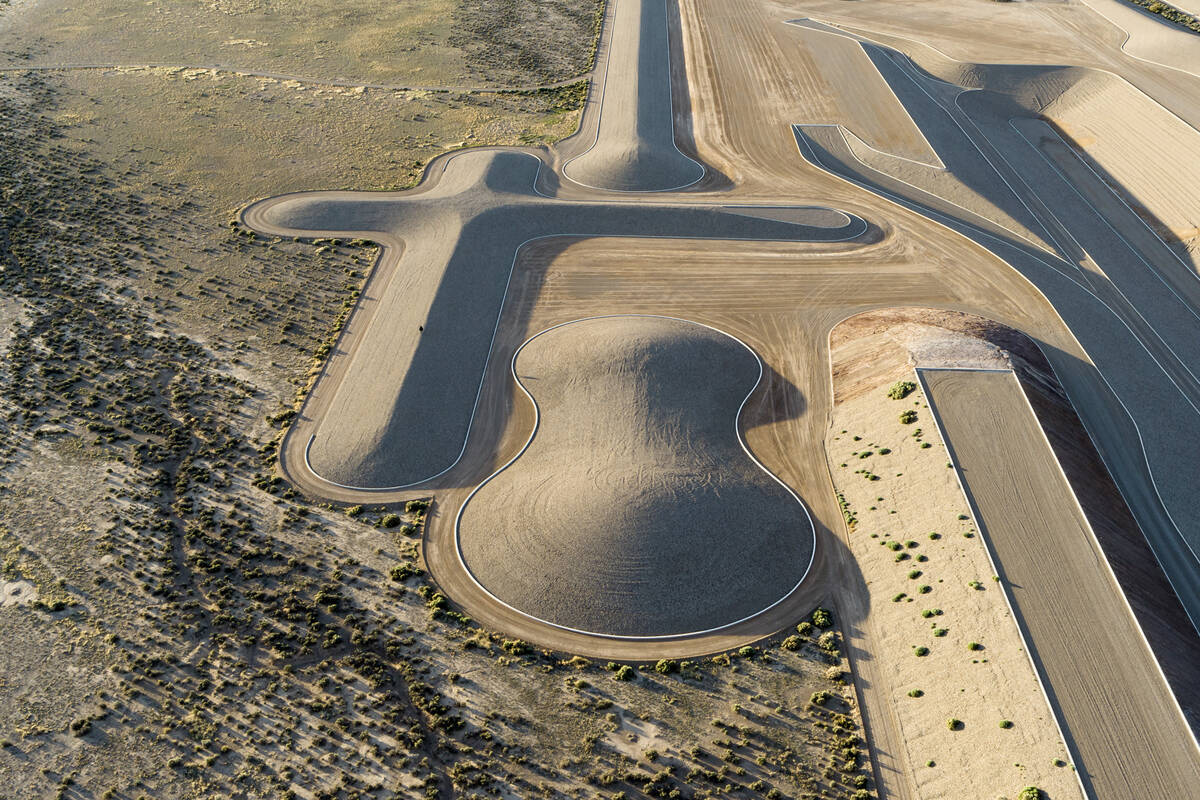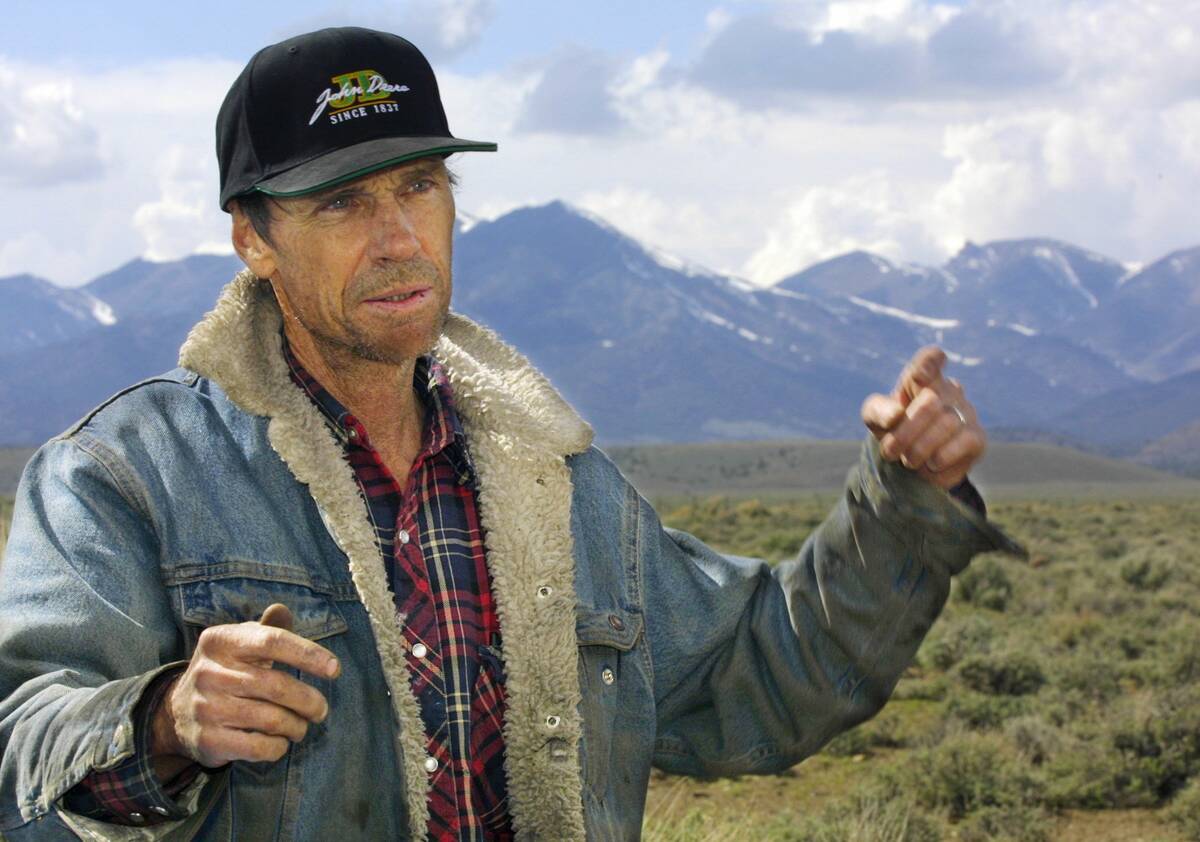3 hours outside of Las Vegas, City is an escape from reality
GARDEN VALLEY — Concrete borders separate carefully manicured hills of river pebbles from the brown-gray stones marking the path, their long, parallel trajectory leading the eye down a seemingly endless, ceilingless hallway.
There are no landmarks. There are no maps. There aren’t even footsteps of those who walked here before from which to draw direction.
All around, the sea of stones form shapes the brain constantly tries to interpret – an empty lake bed? An amphitheater? A maze?
Only the crunch-crunch-crunch of rocks underfoot and the occasional jet speeding overhead reminds you that this is not a dream.
This is City.
Watergate, the fall of the Berlin Wall, the Los Angeles riots, 9/11 and the COVID-19 pandemic are just a few of the world events that occurred while artist Michael Heizer plodded away building this colossal art piece in a remote Lincoln County valley.
Spending 50 years on just one art project is a mind-bending undertaking, but it’s just one of many details that makes describing — and interpreting — City such a a Sisyphean task.
Its sheer size — a mile and half long and half a mile wide — makes it impossible for a viewer to step back and take it all in.
Even the work itself, a mix of hills and smooth depressions made from neatly kept riverbed stones and art sculptures made of sharp concrete forms, changes before the visitor’s eyes.
Like the shifting of a kaleidoscope, the sun alters the shapes around the viewer in real time. Every movement or turn of the head by the viewer encases the Nevadan landscape in a temporary frame.
Visiting is no easy feat
The artwork, which cost $40 million to build and another $1.2 and $1.3 million annually to maintain, opened to limited public viewing in 2022.
Much like viewing it, even attempting to visit City is not a causal endeavor.
First, interested parties must sign up to request a reservation, which are limited to first-come-first-serve basis each season.
If selected — and after paying $150 for an adult ticket — golden ticket winners must then make the hour and half trek to Alamo, a sleepy blip on U.S. Route 93.
From there, a driver transports no more than six daily visitors another hour and a half — partly on asphalt before turning off onto a decently maintained dirt road — before arriving at City.
If the reservation process and journey wasn’t enough, the visitation season — which runs from mid-May to mid-November — is limited to Tuesdays, Wednesdays and Thursdays.
Approximately 700 people have visited the sculpture since it opened, according to the Triple Aught Foundation, a nonprofit established in 1998 to oversee and operate the work.
If you’re lucky enough to obtain a ticket and find a way to Alamo, the final rule is one many in the age of everything Instagramable might have a hard time stomaching: no pictures.
“Heizer created the City over a period of decades, and his intention is that visitors personally experience the City using all their senses; each visitor is enveloped in the environment and feels the relationship between the positive and negative space,” the waiver form reads. “Photographs or recordings cannot capture this experience and do not authentically represent the artwork.”
The form also warns visitors that City is a copyrighted work, and the foundation will demand the removal of the work or seek compensation for the unauthorized use of any photography or video of the art sculpture.
The foundation said it hasn’t encountered a time when a visitor to the sculpture has taken an unauthorized photo and shared it online.
Land art and protections
Although City may be the most difficult to view, it’s far from Heizer’s only work in Nevada.
Shortly before he started building City, Heizer built Double Negative, a 30 foot wide, 50 foot deep trench built near the Mormon Mesa, northeast of Logandale.
Double Negative, like City, is part of the land art movement, which emerged in the 1960s and 1970s. Like City, land art is made directly in the landscape and often used dirt, rocks and plants.
Nevada is home to at least 15 land art sculptures created by Walter De Maria and Michael Heizer, according to the Nevada Museum of Art.
In June 2015, an over 700,000 acre parcel of land — including the valley where City is located — was declared a national monument by then-President Barack Obama at the urging of late U.S. Sen. Harry Reid.
The designation, which covers portions of land in Lincoln and Nye counties, blocked a potential railroad that would have carried nuclear waste shipments to Yucca Mountain.
Complex meaning
The world disappears behind the viewer when descending into City, far from any cell service or recognizable roads.
City is abstracted, leaving a viewer’s brain to try to make sense of the excessive space and line art-like forms.
Hidden on nearly opposite sides of the far-reaching work are sculptures within sculpture, all made from dirt, rocks and concrete mixed on site.
Complex One, as the piece is called, consists of a slanted, smooth dirt embankment. A concrete “T” parallel to the Earth nearly levitates from the top of the slope. An even larger concrete “L”, which has been tipped on its side, with the long end parallel to the sky, balances in front of the embankment.
Near Complex One, a long slanted wall mimics what feels like a castle battlement, tall, with a flat top that can be walked on. Large pieces of what look to be rock decorate the sides of the wall, large thin pieces jutting past the top of the wall that stretch to the sky like bones.
On nearly the opposite side of City, a second complex, dubbed “45°, 90°, 180°”, looks like it could be an altar created to align the stars by some aliens long gone. Thin and thick triangular prisms taller than a truck point toward the west on a large concrete slab. On one end, three squares of smooth concrete – one leaning on an angle, another standing straight up and another flat — sit in an elevated concrete box that looks like it has been cut at an angle.
Heizer’s work is inspired by “Native American traditions of mound building and pre-Columbian ritual cities of Central and South America,” according to Heizer’s biography on the Gagosian’s website, which has hosted other pieces of his work.
But as for City’s meaning, it’s up to the viewer.
“I am not here to tell people what it all means. You can figure it out for yourself,” the artist told the New York Times in 2022.
Contact Taylor R. Avery at TAvery@reviewjournal.com. Follow @travery98 on X.



